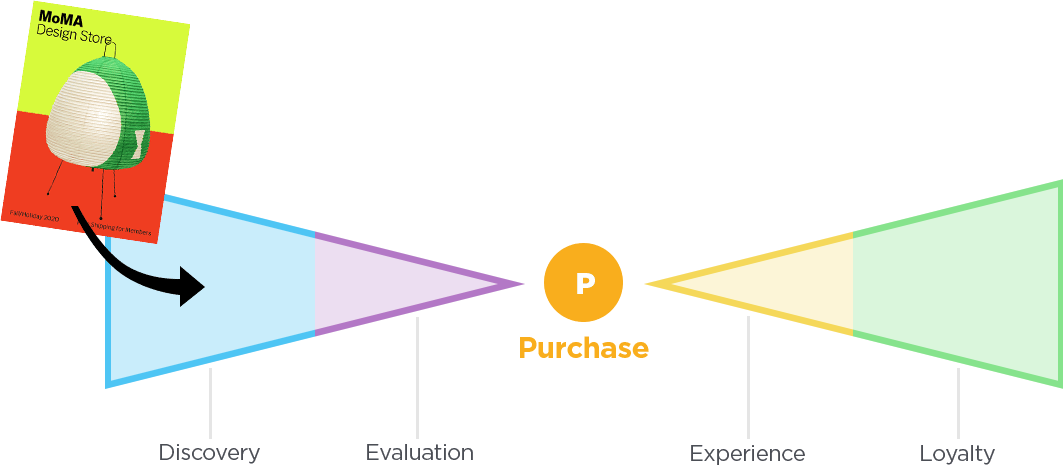Gone are the days where TV, radio, and print dominated marketing budgets. Today, online retailers define their marketing budgets by their spending on digital channels like social media, email, and search engines.
With pandemic-catalyzed digital transformation, pressure from stakeholders to be a sustainable business, and consumer behavior changes—print catalogs are being disrupted by digital ones.
In this post, we explain how you can overcome the challenges you’ll face as you make the transition from print to digital and how you can maximize your reach, conversions, and sales with your online catalog.
Why is digital replacing print?
Print is the last part of the marketing stack to be disrupted. Social media, SEM, web content, and apps have entirely disrupted older marketing techniques, and print is the last part of the stack to shift to digital.
Catalyzed by the pandemic, digital transformation has rapidly accelerated over the last year, and today, 87% of product research takes place online.
Savvy marketers who have reacted to these changes can boost sales and conversions by optimizing digital content to capture shoppers at the top and middle of the sales funnel.
What other reasons are moving marketers away from printed publications and towards digital? There are three main ones:
- Print takes up a massive part of the marketing budget;
- Print catalogs use lots of paper, which harms the environment;
- The end-to-end process from creation to distribution is clunky and slow.
The second point is paramount; online digital catalogs allow businesses to reach greater sustainability levels and significantly reduce their carbon footprint.
So, from the perspective of the environment, cost, and logistics—the case for a digital publication over a print one couldn’t be more substantial.
And when you can capture the waves of online shoppers who are still in the discovery phase, there’s just too much opportunity to miss that print can’t access.
If you want to exploit digital transformation and online shopper behavior fully, there are several challenges to consider that you’ll need to overcome.
The three main challenges of replacing print with digital

Firstly, let’s look at the three main challenges marketers face when moving from print to digital publications:
- Building reach;
- Defining goals and attribution models;
- Serving the right content, at the right time, to the right shoppers.
How to build reach with your online catalog
Up until now, you may have been heavily reliant upon the vast amount of reach your offline catalog has had, and moving away from this to a digital one can seem daunting.
Rather than grinding your offline publications to a halt, it’s better to build up the reach of your online catalog first on different online channels and then gradually reduce the production and distribution of your print catalog.
To build up your online reach, you need to start by setting out your strategies for each channel that you market on. You’re competing with far more competitors than usual, and possibly on a global scale. Essentially, you should:
- Start working with publishing partners to build up the reach of your digital catalog;
- Develop strategies for all the channels you market on to drive relevant traffic to your catalog;
- Merge your catalog and publications with shopper apps; for example, you could integrate it with your online loyalty card;
- Target specific top- and middle-funnel shoppers with paid search and display campaigns to reap the rewards of DOPO;
- Enable searchers to find your products organically with online search — spreads in online catalogs can be optimized for SEO and appear as a separate web page;
When all of the above is in motion and your online reach has expanded considerably, tapering off the distribution of your offline catalog won’t seem as scary – and you’ll be able to target more shoppers than ever.
Goals and attribution
Once a print catalog is picked up in-store, or stuffed through someone’s letterbox, measuring the customer journey from discovering products to purchasing them is nearly impossible.
Contrast this with a digital catalog, where almost everything in the customer journey is measurable—allowing you to map out your end-to-end customer journey.
With lots of metrics and numbers flying around, it’s essential to focus on the most relevant KPIs and understand your online content’s role. Ask yourself what your team’s marketers need to track and what goals or outcomes will determine your marketing campaigns’ success.
It’s important to realize that a digital catalog’s true value usually isn’t in direct conversion (as is the case for an online store); instead, it’s the difference in performance between the audience that has seen the catalog and the audience that hasn’t seen it.
With the online catalog, you can target shoppers in the top-of-the-funnel discovery experience of your brand. You can inspire your visitors and help them discover new ideas and products. Ultimately, this will lead to more conversions as they move down your funnel or when you re-target them with bottom-of-the-funnel content. But those conversions are often not attributed to the catalog with standard last-click attribution models.
To understand the value of your catalog, you’ll have to measure the catalog’s impact across the full shopping journey. You need to pick an attribution model that’s right for the catalog. A clear and adequately defined attribution model allows you to understand how your catalog affects conversion later down the funnel.
Ultimately, a catalog can help you discover customers’ latent needs top-of-funnel. Armed with this data, you can serve personalized promotions and content suggestions that customers weren’t actively looking for, mirroring visitors’ discovery journey when they visit a physical store.

Content
Shifting from print to online catalogs requires a change in your organization’s mindset, and it may mean changing the working processes of entire departments.
You’ll be going from static and periodical publishing cadences to dynamic and real-time ones. And from manual labor to automated product grids. Such changes in how content is made and published will mean that workforces need to change their roles and adapt to a digital-first mindset.
If you’ve managed print catalogs’ production and distribution, you’ll know that it takes weeks, or months, to go from creating, printing, and distributing them.
Moreover, any last-minute changes which you need to make to price or product inventories are a nightmare to process. Your holiday season memories of Black Friday and Christmas at the office fill you with dread as you recall the constant back and forth conversations with printers, agencies, and couriers.
You can’t react in real-time to your needs or the actions of your competitors because you’re chained to out-dated and inflexible processes.
Enter the dynamic online catalog, where prices and product details can be updated automatically from your product feed. No more printers. No more design agencies. No more couriers. Your marketers can spend less time working on the basics and more time on creativity instead.
Furthermore, physical catalogs and PDFs are usually not made for smaller devices, and you might miss opportunities to convert viewers into customers when your content doesn’t look at it’s best on a mobile device.
With the right platform, you can quickstart your mobile presence by making catalogs available for different screen sizes. And as you become more familiar with online content, you can further improve your online catalogs through mobile-first design optimization to ensure that your content is displayed correctly and your visitors stay on the page.
Once you’ve got your viewers immersed in high-quality content, you can further boost your online catalogs’ engagement with CTAs, videos, or links to campaign pages.
Last but not least, AI can power your content. You can integrate the catalog with your data management platform and your product inventory, so you’ll save time with automatically generated product grids, automated detection of clickable areas, and find it much easier to create catalogs in different languages.
Make the switch to a digital catalog
Discontinuing marketing techniques that have been relied upon for decades might feel like a bold move. But by replacing your print catalogs with digital ones, you’ll be able to contribute more to your sustainability goals, reach more shoppers, map out your customer journey, and serve top-of-funnel content that engages more than any other channel.
 At Publitas we’ve helped 1900+ customers with their digital transformation and sustainability goals. Feel free to contact us or try our product free for 14 days.
At Publitas we’ve helped 1900+ customers with their digital transformation and sustainability goals. Feel free to contact us or try our product free for 14 days.
